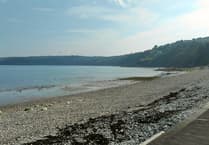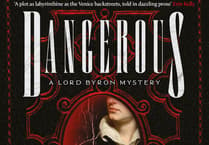Light - and how the photographer uses the light and shade in his or her images - is the fundamental skill in all photography.
Indeed the word translate from its Greek origin as ’writing with light’.
And ’high key’ photography is all about light and yet more light - and reducing if not actually minimising the shadows.
The technique produces a quite unique ’feel’ to the resulting image. Shadows introduce drama, mood and tension, whilst an almost white, highly lit image results in softness, an airy freedom and lightness, perhaps even a ’feel good’ factor quite different to a dark, shadowy image.
It is a technique and style well suited to studio photography where the photographer has total control over the lighting and can use white or light colour backgrounds, as well as multiple light sources such as flash units and reflectors to give ’wrap around’ lighting to reduce the shadows.
It is thus a very popular technique for portraits of both people and their pets, food, flowers, and product and advertising photography where the well lit ’feel’ is a key ingredient to the final image, lending itself to the subject and its intended audience.
The images of ’Amie’ by Sue Leeming and the dog portrait and the ’Fairy Princess’ both by Sue Blythe attached with this article are great examples of the studio technique.
The backgrounds have been blown out to pure white, the subjects clearly the focus of attention, and both with just enough shadow in their features to give some modelling and depth to the images.
It can however be used in other genres such as landscape work, for example in snowy conditions or in water reflections where a subject such as trees or reeds can be given prominence and the backgrounds ’over exposed’ to a white nothingness in an almost ’minimalist’ way, again ensuring the viewer’s attention is drawn into the image.
The image by Sue Jones of a tree in snow is also a good example of the technique applied to a landscape, the composition carefully considered with the tree on an intersection of the thirds, and the hedge in the background also ideally placed to please the viewer’s eye.
The concept of high key photography is easy, but the execution can be tricky.
Diffuse, soft light is generally a requirement - hard light such as strong sunlight or the light from a small source such as a flashgun produces deep shadows, which are difficult to fill in whether with reflectors or in post-production processing.
If working in a studio, fit your strobes or flash heads with large softboxes or umbrellas to diffuse the light, and be prepared to move them and any reflectors until fully satisfied - adjusting their position or the strength of any flash until the shadows have been well controlled , the light fully ’wrapped round’ your subject and the background basically shadowless.
A good photograph of whatever style will say something to the viewer - it will have an impact, tell a story, evoke an emotion - and high key photography is just another technique in the photographer’s toolbox to create that relationship with the viewer.
Why not consider joining a camera club such as the Isle of Man Photographic Society and take the opportunity to gain experience and skills? Members of the society will always give a warm welcome to new members and be happy to share their knowledge, and give advice to help develop your skills. Have a look at our website - www.iomps.com or our Facebook page for lots of ideas to stimulate your interest.
Chris Blyth




